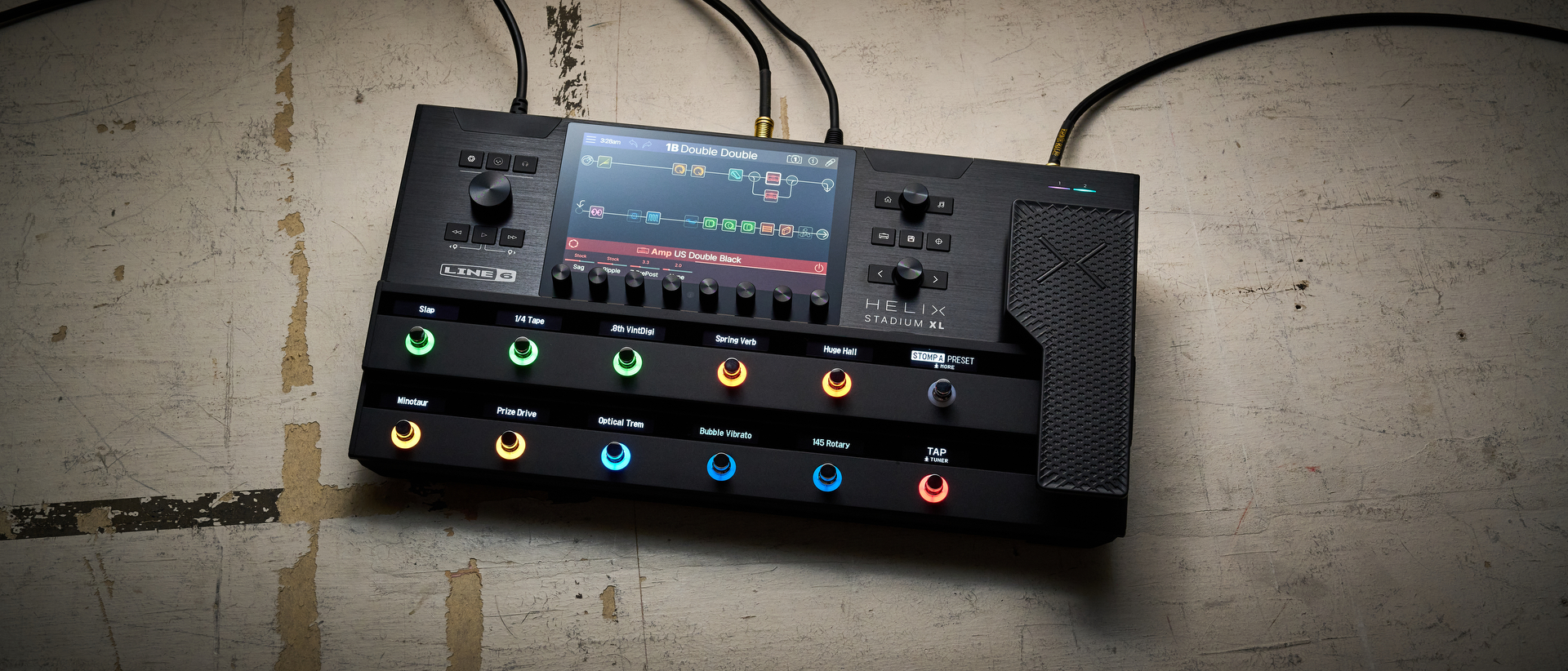100 ways to be a better guitar player
From technique and theory to gear and tone - this is the ultimate guide to improving your guitar playing, whatever your skill level
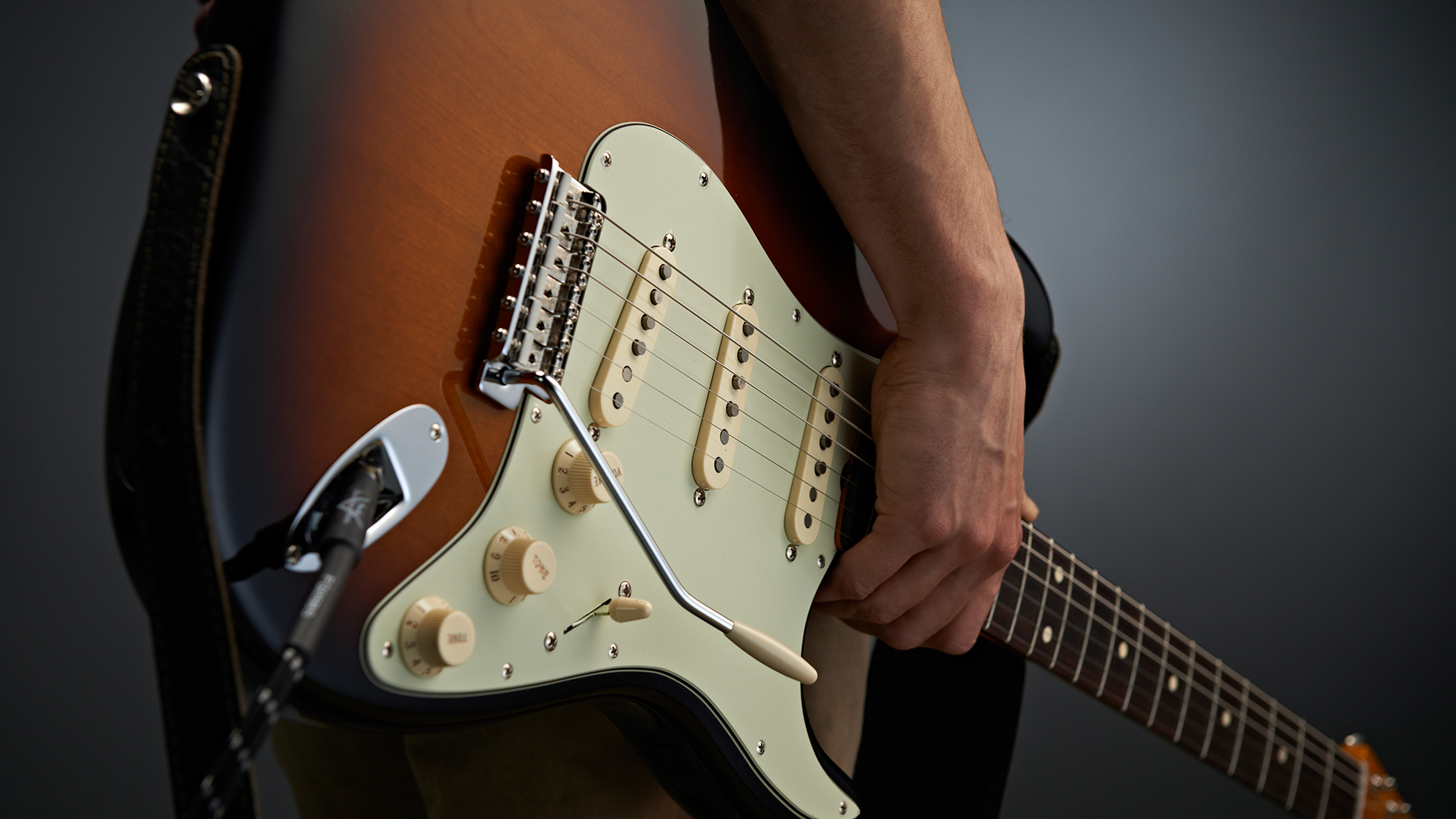
As guitarists, we're always looking for ways to improve our playing, but given the huge variables in ability between players, some advice can be purely subjective.
A technique one player has been using for years could be the source of a lightbulb 'eureka' moment for another, yet do nothing for somebody else. But no matter your ability, the quest for self-improvement will always remain.
We've put together a massive list of 100 tips guaranteed to improve your guitar playing, with suggestions that apply across the spectrum - whether you've just taken your first guitar out of the box, or you're a seasoned shredder in pursuit of perfection.
1 - 25
1. Look after your hands
Keep your fret-hand nails short to help you finger the notes more easily. Longer nails on the picking hand can be essential for certain styles, but rough edges will ruin your tone. Keep nail clippers and a file or emery board in your gig bag, and wash your hands prior to playing. Clean hands will transmit less dirt, improving string life and tone.
2. Create a dedicated practice space
A dedicated practice space lets you make the most of your guitar-playing time. Some items for inclusion are a music stand, a slide, a capo, picks, a guitar stand, a small amp, a CD/MP3 player that can slow down the music while maintaining the original pitch, a metronome and tuner.
All the latest guitar news, interviews, lessons, reviews, deals and more, direct to your inbox!
A laptop, tablet or smart phone can be a great option for taking your practice materials on the move, since items like a tuner, metronome and CD/MP3 player are available as applications.
3. Buy high-quality cables and connectors
Investing in a quality guitar and pedal cables can make a big difference to your tone. For long cables and true-bypass setups, a good-quality audio buffer for impedance matching can also bring your tone back to life. In addition, consider purchasing a good power supply for your pedals, or a dedicated pedalboard.
4. Get your guitar set up
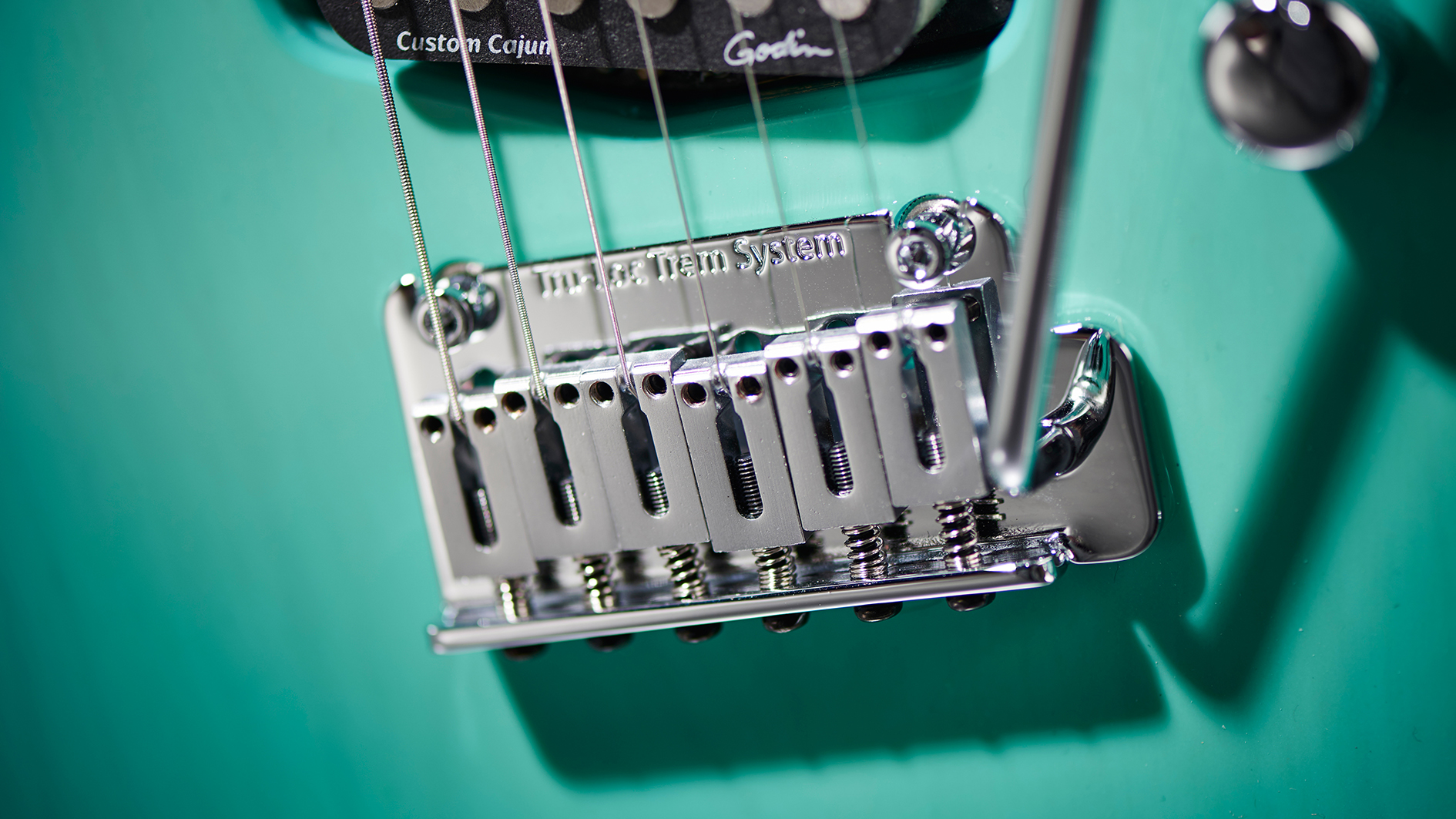
A proper setup is important to a guitar’s tone and playability. Light-gauge strings and low action are great for fast legato, while heavier strings and a higher action are better for picking resistance and bending.
A good tech will adjust the truss rod, nut, pickup height, neck tilt, fretwork, bridge saddles (for height and intonation) and the action of the vibrato arm (if your guitar has one). If you like to experiment with string gauges, your guitar may need to be adjusted for this.
5. Practice slowly
Practicing slowly is great for developing consistent, accurate results. It’s not the most exciting way to spend time on the instrument, and it requires focus and patience. But by doing it, you are programming your brain with the correct information.
Virtuoso skill is a showstopper and can be great in the right place, but most of the time, it’s more appropriate to play less
Once you know the material, it’s easier to ratchet up the tempo. By practicing too fast in the early stages of practice, there is a greater chance that mistakes will be made - and repeated.
6. Be stylistically aware
Virtuoso skill is a showstopper and can be great in the right place, but most of the time, it’s more appropriate to play less. A mature musician sticks to parts that complement the song, even if these are perceived as easy to execute.
7. Learn the major scale intervals
The major scale provides the building blocks of many of the chords and scales you will come across in contemporary music. By understanding the structure of the major scale we can then begin to harmonize it in various ways to form triads, seven chords and extended chords, as well as understand the modes that accompany them.
The major scale has seven intervals: the root, major 2nd, major 3rd, perfect 4th, perfect 5th, major 6th and major 7th. The intervallic distance between each interval forms the pattern W-W-H-W-W-W-H, where W is a whole step and H is a half step.
8. Learn all the notes on the neck
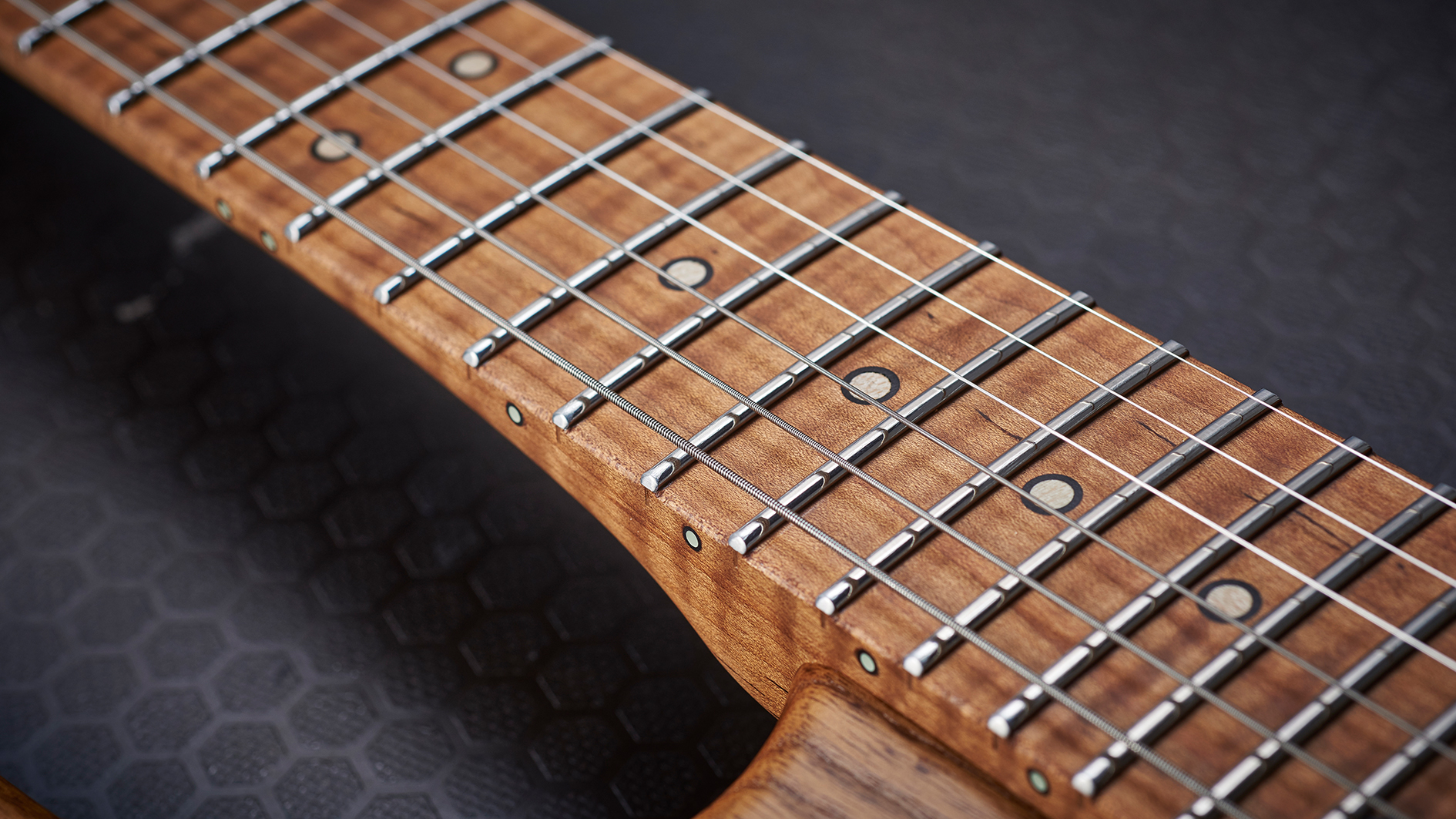
It’s worth learning the note names of every fret on every string. This will help you with every aspect of musicianship, from sight reading to the application of harmony. Try learning the notes across a fret as opposed to up and down one string.
For example, the 5th fret contains the notes (low to high) A, D, G, C, E and A. Test yourself when you are away from the instrument by thinking of any random fret number and then reciting the note names that occur on it. It’s a great way to improve your knowledge.
9. Play everything off any root note
Practice playing as many scales as possible off any note. For example, starting from the root note of A on the fifth fret of the sixth string, play the major triad chord, major triad arpeggio, major pentatonic scale and the major scale. If you then add the major seven chord and major seven arpeggio, you will be able to play all things major in that position.
It can be very useful to take a root note and learn where all the intervals are placed in relation to it
Next, move to the corresponding minor fingerings and include modes of the melodic and harmonic minor, extended chords and symmetrical scales. Try this process with root notes on the fifth, fourth and third strings, with a view to building a fluent knowledge of fretboard harmony.
10. Learn the road map off a root note
It can be very useful to take a root note and learn where all the intervals are placed in relation to it. This sort of “intervallic roadmap” can be particularly effective when combined with some theory knowledge.
Together, they can help you eliminate reliance on chord and scale books, and make it easy to create your own chord fingerings and scale shapes, which in turn can help you develop your own style and sound.
11. Learn chord and scale formulae
By learning chord and scale structures as intervallic formulas, you can utilize the fretboard roadmap we looked at in tip 10 to create various fingering options. Here are some chord formulas to get you started. Apply them to the fretboard roadmap concept, and note that the intervals in the chord can be repeated in different registers to give you a full-sounding fingering.
- Major triad = Root, 3rd, 5th
- Minor triad = Root, b3rd, 5th
- Major 7 = Root, 3rd, 5th, 7th
- Minor 7 = Root, b3rd, 5th, b7th
- Dominant 7 = Root, 3rd, 5th, b7th
12. Train those ears
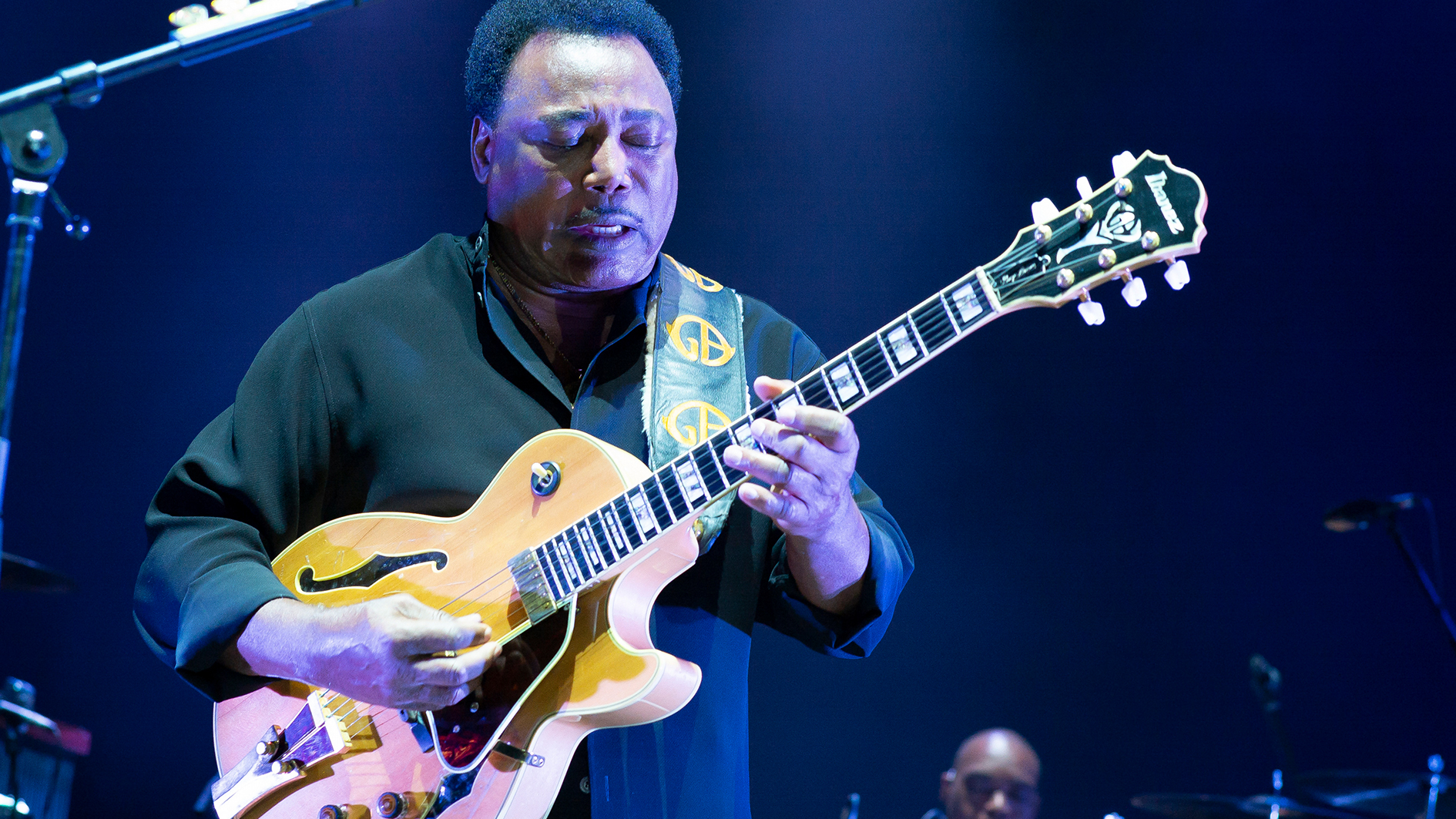
Formal ear-training courses can help you identify intervals, chords and scales when you hear them. This skill is particularly useful for working out riffs, licks and songs. There are many good resources out there to help you train your ears to identify rhythms, chords, melodies and chord progressions.
Ear training can also help you sing what you play and play what you sing. Players like George Benson take this to the next level by singing and playing lines in unison or harmony.
Split your session into time spent on warm-up, technique maintenance/development, repertoire building and jamming over backing tracks
13. Learn solos by other instruments
Learning solos played by instrumentalists other than guitarists is a great way to broaden vocabulary and technique. Players of instruments like saxophone and trumpet may use approaches that are fresh and new to guitarists, and some licks and ideas for those and other instruments may take you outside the usual guitar fingerings and into new areas.
14. Learn favorite solos verbatim
Eric Clapton spent the early days of his career playing along with various records until the sound of what he played matched what was on the track. Doing this will boost your vocabulary and also improve your delivery, feel, stylistic awareness and sense of solo contour.
15. Divide practice into sections
For example, split your session into time spent on warm-up, technique maintenance/development, repertoire building and jamming over backing tracks. You don’t have to divide the time equally, and you may omit a section now and then, depending on priorities.
For example, an upcoming gig for which you will perform covers might require you to spend more time working on repertoire and jamming over backing tracks.
16. Try the “handcuff” theory
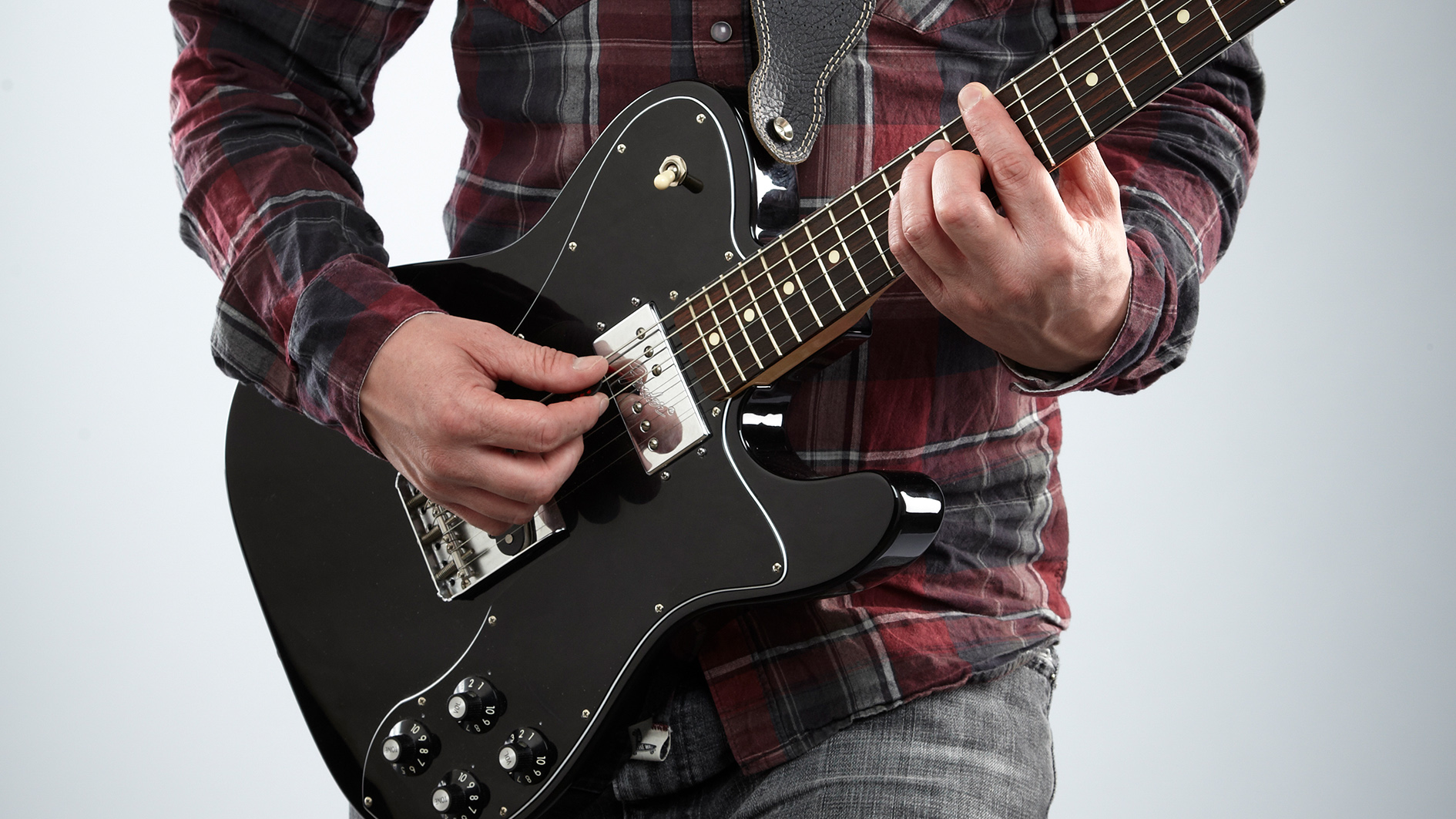
This is a self-imposed approach to practicing in which you limit your approach. For soloing over a backing track, you may decide to play only above the 12th fret, play only on the top two strings or exclusively use legato technique (hammer-ons, pull-offs and slides).
Once you’ve exhausted your vocabulary with one approach, you can dig deeper, changing note choice, articulations, rhythms and so on.
17. Use open tunings for normal playing
Artists as diverse as Joni Mitchell, Coldplay, Richard Thompson, John Martyn, CSN&Y, Keith Richards and even Status Quo have made great use of open tunings. Whether a simple drop D (sixth string down a tone), open G (D G D G B D), open E (E B E G# B E) or DADGAD, open tunings can inspire your creative side.
Guitarists play a supportive role 90 percent of the time, so keep your rhythm chops in shape
18. Change just one note
Take your favorite blues lick, then find several variations to it by changing only the first or last note.
19. Try first-finger string bending
How comfortable are you with bending strings with just your first finger? If you’re used to applying finger vibrato with it like B.B. King and Jimi Hendrix, it’s the next logical step.
20. Don’t forget rhythm
Concentrate on your rhythm playing as much as on your lead work. Guitarists play a supportive role 90 percent of the time, so keep your rhythm chops in shape.
21. Detune a string
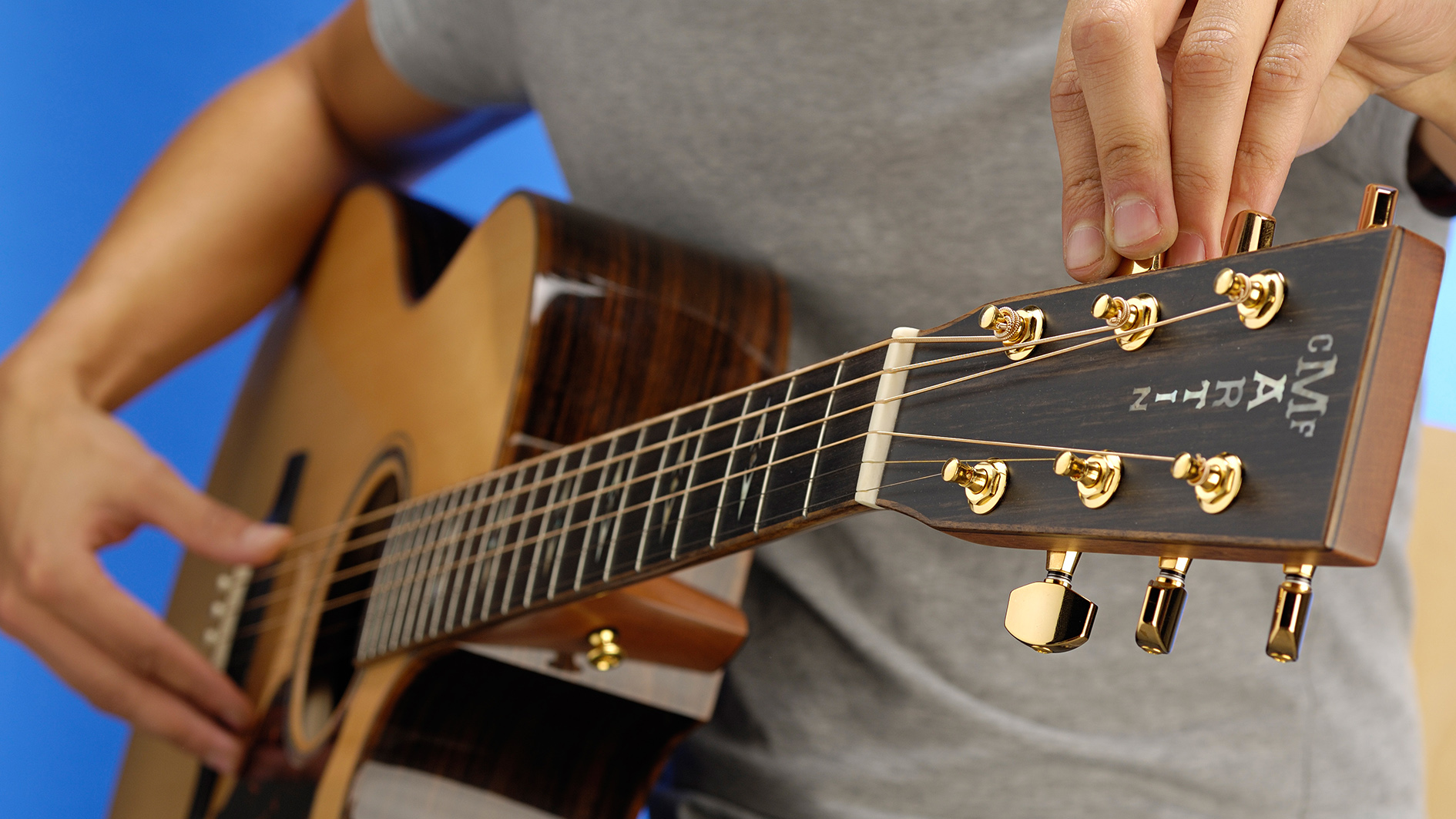
See what new chords and licks can you find by detuning your first string from E to D as Genesis’ Mike Rutherford and Chris Martin from Coldplay often do.
22. Don’t forget octaves
Using octaves you bust out of blues boxes and can move around the fretboard melodically, often using the same two strings. As a test, try to play the minor pentatonic box shape shown here using octaves. It’s surprisingly tricky!
23. Be inspired, but don’t copy
Paul Gilbert and Nuno Bettencourt developed string-skipping abilities in their attempts to recreate Yngwie Malmsteen’s sweep-picked arpeggios. In the process, they achieved a similar degree of speed and fluidity without exactly copying Yngwie’s primary arpeggio technique.
24. Take a tip from Steve Morse (#1)
Organize your picking practice into four categories: four notes per string (chromatics), three notes per string (scales and modes), two notes per string (major and minor pentatonics) and one note per string (arpeggios). Each has its own technical hurdles, but all are essential to becoming a well-versed guitarist.
25. Go to the dark side
Learn a few solos, from tab or by ear, in styles that are not to your usual taste. It’s amazing what other genres can bring to your repertoire of licks. After all, jazz with a rock tone created fusion.
26 - 50
26. Use the right pick for the job
A thin pick (one less than 1mm thick) is great for light chord strumming and can help an electric guitar sound more like an acoustic. However, as it has a lot of “give,” it takes a little while longer to recover from string contact; this can be a hindrance if you want to perform loud, fast picking. Conversely, a thick pick (1.5mm or more) will reduce the treble content when strumming but will track your fast picking with ease, as it’s very rigid.
27. Build finger independence and strength
Here’s a great exercise to improve finger independence and strength. Fret one string at the fifth fret with the first finger, then hammer-on and pull-off with another finger starting at the sixth. Ascend one fret at a time until you’re thwarted. Dimebag Darrell had a similar pre-gig exercise using all four fingers to maintain his legendary legato chops.
28. Stretch like Ed

Van Halen stated in the early Eighties that he could fret the 12th fret on his 21-fret guitar and reach any fret above it with his fourth finger. Try it and see how far you get. Be careful, though, because attempting long stretches is asking for pain and tendon trouble. Warm up those fingers first.
29. Learn this Steve Vai exercise
Fret Fs and G at the second and third frets of the first string, then duplicate these notes at the seventh and eighth frets on the second string. Do it again at the 11th and 12th frets of the third string, at the 16th and 17th frets of the fourth string, and lastly at the 21st and 22nd frets of the fifth string.
If you find that skipping strings with your pick is difficult, try using your picking hand’s second (middle) finger instead
Now set the metronome and switch between these notes across each string, sliding up, then down, to each fretboard position for a trademark Vai sound. Tip: learn the positions first, then bring out the metronome and set it around 60bpm (two notes per click) before increasing it.
30. Look in the mirror
When playing live, you have to make what you play count, but you also want to entertain your audience. People talk about “live chops” for a reason, so try practicing in front of a mirror. It actually helps.
31. Give your playing the middle finger
If you find that skipping strings with your pick is difficult, try using your picking hand’s second (middle) finger instead. Countless country guitarists (and a growing number of blues and rock players too) favor this as being easier and smoother sounding.
32. Make a clean sweep
When practicing sweep picking, begin by holding down the barre chord shape. Doing so will simplify the fretting hand requirements and allow you to focus on your picking hand. When you’re ready, switch your concentration to the fretting hand to cut off each note after you sound it.
33. Slide into notes for a jazzier sound
Even the simplest minor pentatonic licks sound jazzier when slipped into from a fret below. Try this with chord tones and you’ll be amazed at the transformation.
How many ways can you play a C major chord? A good guitarist has at least five places on the fretboard to play it, courtesy of the CAGED system. Practice playing four bars of the chord, and in each measure, play the chord in a new place on the neck.
34. Learn the CAGED system
The CAGED System refers to five open major chord shapes - C, A, G, E and D - that can be used to form a variety of barre chords. Begin on a C chord in first position: this would be referred to as the C shape. Now take an open A chord shape and move it up the neck three frets so that the fifth-string root note is at the third fret, on C. This is also a C major chord but using the A shape, or voicing, shifted up three frets.
A good guitarist has at least five places on the fretboard to play a C chord
Continue following the letters of the CAGED acronym by playing G- and E-shaped chords, both with a C root note on the low E string’s eighth fret. Complete the five-shape cycle in the key of C by playing a D shape on the top four strings, rooted on C, on the D string’s 10th fret.
For good measure, finish the drill by playing the first C shape 12 frets and one octave higher, in 12th position. Now go back and do the same exercise in a variety of other keys, such as the other four that make up the CAGED acronym.
35. See the C
How many ways can you play a C major chord? A good guitarist has at least five places on the fretboard to play it, courtesy of the CAGED system. Practice playing four bars of the chord, and in each measure, play the chord in a new place on the neck.
36. Take a tip from Carlos Alomar
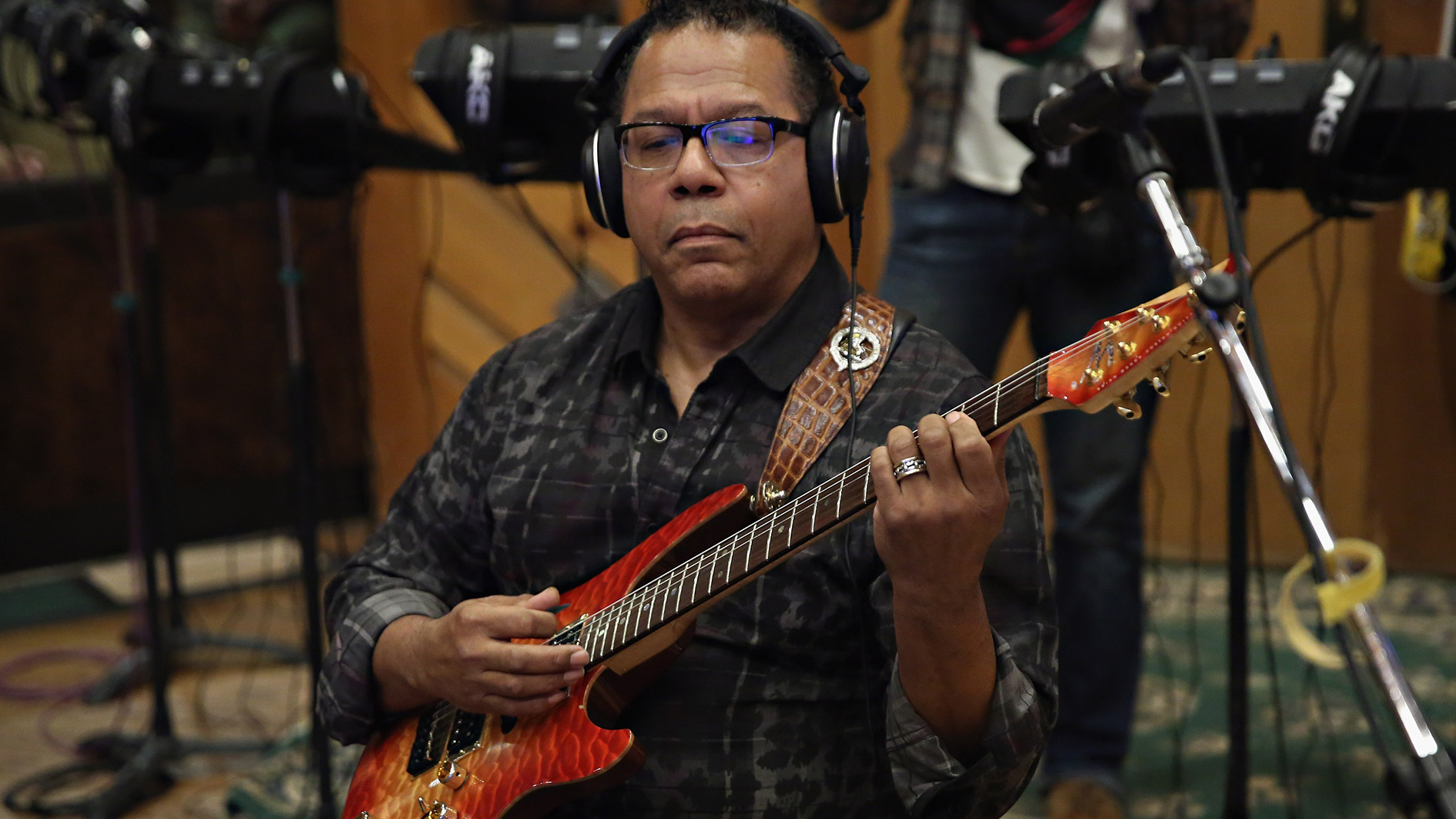
David Bowie’s rhythm guitarist says, “If you know how to play an F chord 20 different ways, don’t you think that traveling from one F chord to another F will let you play a little bit of lead in between?” The concept is similar to playing chord stabs between licks, and it’s a good way to dress up a rhythm part.
37. Use the power of three
A big part of countless guitarists’ chord chops is the use of three-string voicings. These deliver enough note content to spell out a chord’s function, leaving the spare fingers free to add other notes or melodic embellishments. Consider Jimi Hendrix’s Little Wing, Nile Rodgers’ Le Freak and the Rolling Stones’ Start Me Up.
38. Follow the drums
Many guitarists improve their rhythmic feel and vocabulary by practicing from books that teach the rudiments of drum playing. Grab a book and see what it can do for your rhythm playing.
39. Take a tip from Satch and Vai
The two shred virtuosos used to sit back to back and swap licks, trying to match what one another would play using only their ears to guide them. They’d also play question-and-answer blues licks over a backing track - one would ask the question, the other would answer.
Try doing the same with a friend, then finish the session with ear training by playing chords and intervals and seeing if the other player can determine what’s being played. This a great way to train your ears and fingers.

40. Learn it in your head first
Got a solo you’re trying to learn? See how far you can get by working it through in your head first, away from the guitar. See if you can figure out what key it’s in, where it starts on the fretboard and on which string. When you get back to the guitar, try it and you’ll soon see where you’re going wrong. With a bit of trial and error, you’ll soon train your ears.
41. Ape the bass, or go back-to-front
Having trouble working out the chords to a song? Listen to what the bass is doing - that will often give you the root note for the chords. Also, if you get stuck a few chords in, try going to the end and working backward. It’s amazing how often you can fill in the gaps using these approaches.
42. Think macro
Take a really famous lick, intro or short solo and try to hear every tiny nuance the guitarist has used. Then, see if you can play it exactly right. Hendrix’s Hey Joe intro is a wonderful case in point - everyone thinks they know it, but listen again and you might be shocked at just how much is going on in this simple line.
43. Take a tip from Steve Morse (#2)
When soloing, use your bridge pickup for passages below the 12th fret (a brighter tone will help lower notes cut through better) and the neck pickup for notes above the 12th fret (high notes won’t sound as screechy with this bassier tone).
44. Take a tip from Yngwie Malmsteen
Play fast note passages with your neck pickup, then, on the final sustaining note, switch quickly to your bridge pickup and apply wide vibrato. The brighter tone and wide vibrato will add a lot of drama to the final note.
When performing, point your amp’s speaker toward your head rather than toward your ankles
45. Take a tip from Eric Clapton
On a dual-humbucking guitar, set the pickup selector in the middle (both pickups on), have the bridge pickup on full volume and turn the neck pickup down to 7 or 8. This is the live Crossroads tone, but it’s also a great way to create what sounds like a huge bridge-pickup sound in the studio.
46. Aim for the head
When performing, point your amp’s speaker toward your head rather than toward your ankles. It will give you a better sense of your tone.
47. Take a tip from James Taylor
Spice up your songs by turning straight major chords into major 7ths, major 7ths into major 9ths, straight minors into minor 7ths, minor 7ths into minor 9ths, and so on.
48. Take a tip from B.B. King

B.B. told Gary Moore to slow down his guitar work and make it more soulful by playing every other note. Moore heeded this advice, and his playing on later recordings sounded more considered and still had plenty of his signature flash when required.
49. Take it to the bridge
Pick close to the bridge for a cutting, bright tone. This is a quick way to get that John Scofield sound, and it’s great for big, chorused chords, too.
50. Take a tip from Eric Johnson
Johnson attempted to sound like Cream-era Clapton by roughing up the sides of his pick and using more upstrokes for a bright, cutting sound.
51 - 75
51. Take a tip from Chuck Berry
Introduce double-stops into the second or third chorus of a long blues solo. It will instantly add power and “lift” to your playing.
52. Check your intonation
When restringing your guitar, check that your intonation is good by sounding the natural harmonic at the 12th fret. If it’s off, you’ll need to intonate your guitar. No matter how well you play, your results won’t be good if your guitar isn’t in tune.
53. Try the D tuning technique
Adjust your amp’s treble pot using and open D chord, the middle pot using an open A and the bass pot using an open E. The resonances of each chord seem to work well with these respective tone frequencies.
Everyone should know lots of scales. What is a chord if not the notes of a scale hooked together? The knowledge will unlock the neck for you
John McLaughlin
54. Try the Indian pentatonic
Also known as the Mixolydian pentatonic, this scale replaces the minor pentatonic’s f3rd with a major 3rd. It has an exotic flavor, especially when used over one-chord vamps, and it’s also great for soloing over blues and rock sequences.
55. Create an instant fusion scale!
Take the minor pentatonic and change the root to a major 7th (usually one fret lower). This new scale will sound great over an altered chord. With A minor pentatonic, if we swap every A note for Gs, the new scale will Gs C D E G, which is perfect for playing over various E7 chords (E7s5, E7s9 etc.).
56. Learn your scales
John McLaughlin has said, “Everyone should know lots of scales. What is a chord if not the notes of a scale hooked together? The knowledge will unlock the neck for you.”
57. Bury the guitar
Count Basie’s guitarist Freddie Green once said, “You shouldn’t hear the guitar by itself. It should be a part of the drums, like the snare is in A or the hi-hat D minor.” What he means is, lock in with the kit.
58. Take a tip from the drummer
To take Freddie Green’s idea a step further, break up your rhythm playing by thinking of pitches in relation to a drummer’s kick, snare and hi-hat. A six-string barre chord could have the sixth string as the bass drum on one and three, the top three strings as the snare on two and four, and the muted strings to act as 8th or 16th note hi-hat beats.
59. Use chromatic exercises
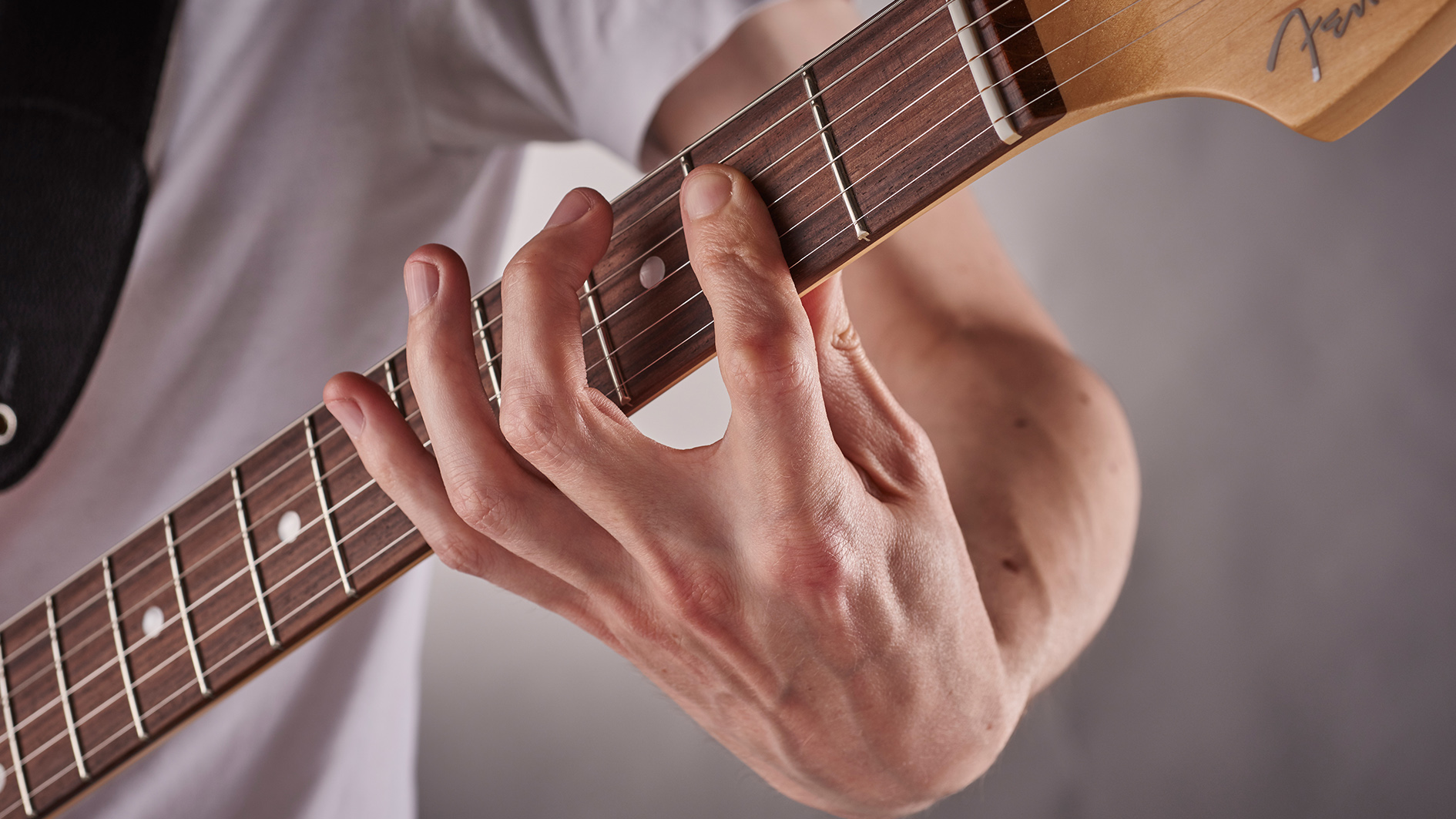
While chromatic exercises can are good for warming up with, they rarely feature in solos, so unless you plan to use them considerably in your playing, don’t spend too much time on them.
60. Practice in solo mode
When working on modes, it’s helpful to have a backing track or partner to play along with. If you don’t have either, choose E-based modes and use the sixth string as a bass drone as you play the mode on the first string.
This is a great fretboard and aural exercise for working through the seven common modes (Ionian, Dorian, Phrygian, Lydian, Mixolydian, Aeolian, Locrian) as related to E.
61. Anchor Your fourth finger
When performing arpeggio picking in which the strings need to sustain, try resting your fourth finger lightly on the guitar’s body so you can pivot your hand’s movements from it.
Instead of working on new areas of guitar playing, fine-tune aspects of your playing that are unique and which you can perform well
62. Switch to acoustic guitar
Try out all of your electric guitar parts on an acoustic and see if you can perform them as cleanly. Frank Gambale likes to do this and finds that it helps him really hone his technique.
63. Watch your fretting pressure
Are you using too much? Fret a note or chord with your standard approach and then slowly release the pressure until you can hear the strings buzz. The pressure you achieve just before the onset of fret buzz is the ideal amount to use, producing good-sounding notes with an economic use of energy. This works especially well for barre chords and busy legato runs.
64. Fine-tune it
Instead of working on new areas of guitar playing, fine-tune aspects of your playing that are unique and which you can perform well. See if you can make them even better and turn them into a signature element of your guitar work.
65. Know who you are

Guitarists tend to focus on playing skills, musicians tend to focus on playing and music skills (theory/reading/aural), and artists use these skills to create their own music. Figure out which category best describes you, and then formulate how you progress with the guitar.
66. Engage the audience
Many guitarists perform while looking at their fretboard or the floor. You may have difficult parts to play, and you may feel nervous, but this shouldn’t stop you from acknowledging the people that have paid to see you perform.
Too much noodling will bore your audience and eliminate any sense of dynamics
To help you keep visual contact with your audience, trace a letter m with your eyes as you look out from the stage. This is a public speaker’s trick that will help you connect with listeners without becoming too focused on any one individual in the audience.
67. When less is more
It’s one thing to be able to shred furiously on song after song, but make sure you can also play melodically and with tasteful, slower licks. Too much noodling will bore your audience and eliminate any sense of dynamics. It often pays to slow down and play thoughtfully.
68. When more is more
It’s great to see a guitarist play tastefully all night then take a solo to the next level by reeling off some unexpected speed licks. It’s times like these you then understand why you keep practicing your scales and notching up the metronome’s speed.
69. Perfect your alternate picking
Alternate picking is logical. First, sound out the rhythm - one-ee-and-uh, two-ee-and-uh, three-ee-and-uh, four-ee-and-uh - with each syllable representing one 16th note. Downpick on the beat (the one) and the offbeat (and), and up-pick on the second (ee) and fourth (uh) beats. When alternate strumming, keep your hand going, either striking the strings or performing ghost strums, so that you don’t lose your timing.
70. Learn the reggae strum

When playing the trademark reggae offbeat chords, it’s logical to use upstrokes, as you can perform a ghost strum on the downbeat to help you with the rhythm. However, downstrokes can make the chord sound more solid. See which one works and sounds best for you.
71. Take a break
We’ve all experienced frustration when trying to develop techniques. Instead of beating your head against a wall, put down the guitar and take a time out. It can help you put your playing into perspective. In addition, a day or two away from a technique gives your brain time to “program” it, and you may find that it’s easier to perform.
72. Learn to sing
It’s all well and good to be the greatest guitarist on the planet, but the players that make the biggest impact financially and in the public’s hearts are those that can bring that something else to the table. Eric Clapton was a great guitarist with John Mayall’s Bluesbreakers and Cream, but he became a household name when he took center stage and trained himself to connect with the audience as the person delivering the message in the song.
73. Warm up
The chromatic scale is made up of every note available to us within a given key. If you move your finger up any string one fret at a time, 12 times, you will end up playing a chromatic scale. Example 1 is a four-notes-per-string fingering that will provide a two-octave chromatic scale. This example serves as a great warm-up exercise and works on both alternate-picking and one-finger-per-fret techniques.
74. Harmonize the major scale in triads

If we harmonize each of the notes of a major scale in thirds and fifths diatonically (as they fall within that scale), we end up with a string of three-note chords, or triads. In the key of C, the chord names are: I (C major), ii (D minor, or Dm), iii (E minor, or Em), IV (F major), V (G major), vi (A minor, or Am) and viiº (B diminished, or Bdim).
The syntax employed here involves assigning a Roman numeral to each scale degree, using a lower-case numeral for a minor chord and a lower-case numeral with a hollow superscript circle for a diminished triad. In this way, we can write chord progressions as such: I-IV-V, ii-V-I, and so on. Shown here are four-note voicings of the seven triads that “live” in the key of C, played on the middle four strings and with the root note doubled on the A and G strings.
75. Harmonize the major scale in seventh chords
A triad may be thought of as a third interval stacked upon a third interval. Placing an additional third on top of a triad yields a seventh chord, of which there are a variety of types, or qualities, determined by whether we are using a major or minor third as a building block. Seventh chords have a more complex harmonic color than triads and are used in many styles.
The names of the seven seventh chords in the key of C are reckoned as follows: I7 (C major seven, or Cmaj7), ii7 (D minor seven, or Dm7), iii7 (E minor seven, or Em7), IV7 (F major seven, or Fmaj7), V7 (G dominant seven, or G7), vi7 (A minor seven, or Am7) and vii7f5 (B minor seven flat-five, or Bm7f5). The figure shown here demonstrates useful voicings for these chords on the top five strings, with the fifth of each chord doubled on the D and high E strings. For Bm7f5, you’ll need to fret the highest note with the base of your index finger, which may take a bit of practice.
76 - 100
76. Play string-skipping triad arpeggios
Players like Paul Gilbert and Eric Johnson use string skipping to play fluid-sounding arpeggios cleanly. By skipping strings like this, it’s possible to have a uniform pattern of two different notes played on each string. There are some wide stretches required here, so make sure your fret hand is thoroughly warmed up before diving into this exercise.
77. Play string-skipping seventh-chord arpeggios
As with chords, adding the seventh to a triad arpeggio gives it a colorful sound. These string-skipping shapes are the same whether they are rooted on the sixth or fifth string, so you can get plenty of mileage out of them. This example provides you with fingerings for all the chord types in the key of C major. As usual, aim to learn these ideas in all keys and positions.
78. slip and slide
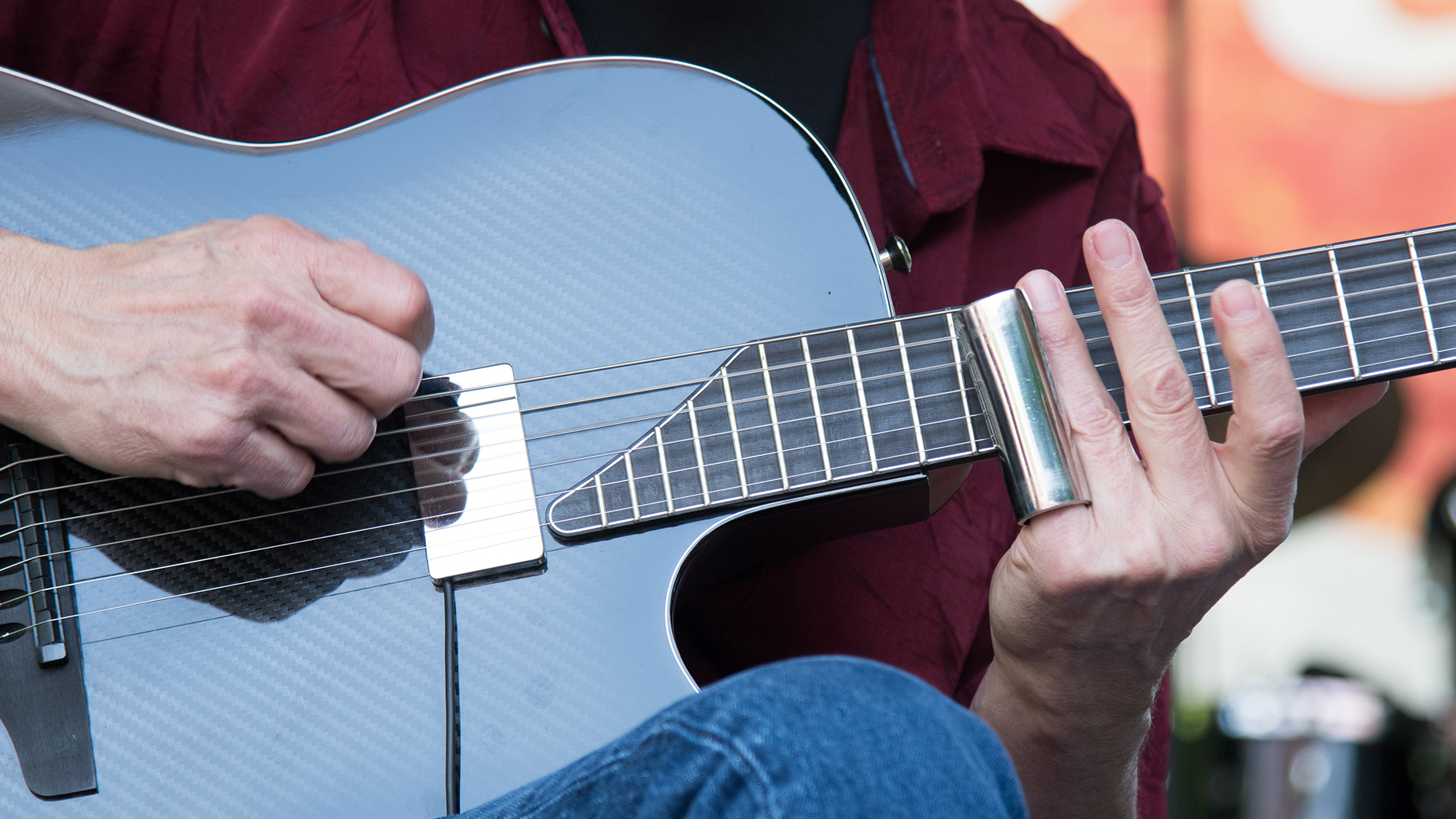
The finger slide is a great expressive element that may be used to add “feel” to a lick by using a minimum amount of effort. The following Robben Ford–style lick demonstrates how finger slides can be incorporated into a simple minor pentatonic phrase and make it sound vocal-like.
79. Use alternate-picking arpeggios
When playing arpeggios at slower tempos, the alternate-picking technique can improve your timing and feel. Playing with alternating downstrokes and upstrokes adds a mechanical, pendulum-like movement to the picking hand that helps retain a consistent dynamic and makes it easier to accent notes.
80. Use your whammy bar
The whammy bar is an expressive tool that can be used to add all manner of nuance to your guitar style. Unlike a regular finger vibrato, the bar can be used to make notes both sharp and flat, with varying degrees of width and speed. This is similar to the way a singer adds vibrato to a note, and it is possible to obtain results with a very vocal-like quality. You can also emulate the sound of playing with a slide. (Jeff Beck is a master of this fake-slide technique.)
81. Experiment with hybrid picking
Country guitarists are particularly fond of and adept at using hybrid picking
Hybrid picking (pick-and-fingers technique) offers a great way to vary your note attack and to play string-skipping licks that would be more arduous to perform using just a flat pick. As the pick requires only the thumb and first finger to clasp it, the second (m) and third (a) fingers are available to be used to pluck other strings.
The sound of flesh on the string also gives plenty of tone, and this technique is useful for both lead and rhythm guitar. Country guitarists are particularly fond of and adept at using hybrid picking.
82. Try three-notes-per-string scale fingerings
Placing a consistent three notes on each string helps when applying various patterns to a scale during solos and improvisation. The example below uses “shape 1” of C major as a canvas. There are seven different three-notes-per-string shapes to learn, and they give you a full fretboard’s worth of options. This example uses legato technique and is in the style of Joe Satriani.
83. Play fingerstyle
Fingerpicking is a useful technique for playing everything from blues to complex accompaniments that would impossible to perform using only a flat pick. The thumb of the picking hand can be used to play bass lines (usually palm muted) while the fingers can pick out arpeggios, melodies and chords, either simultaneously with each other and/or the thumb, or in succession.
This example is inspired by legendary country guitarist Merle Travis and features his signature “Travis-picking” style. Notice how the bass pattern alternates between the root, D, and fifth, A, on the bottom two strings.
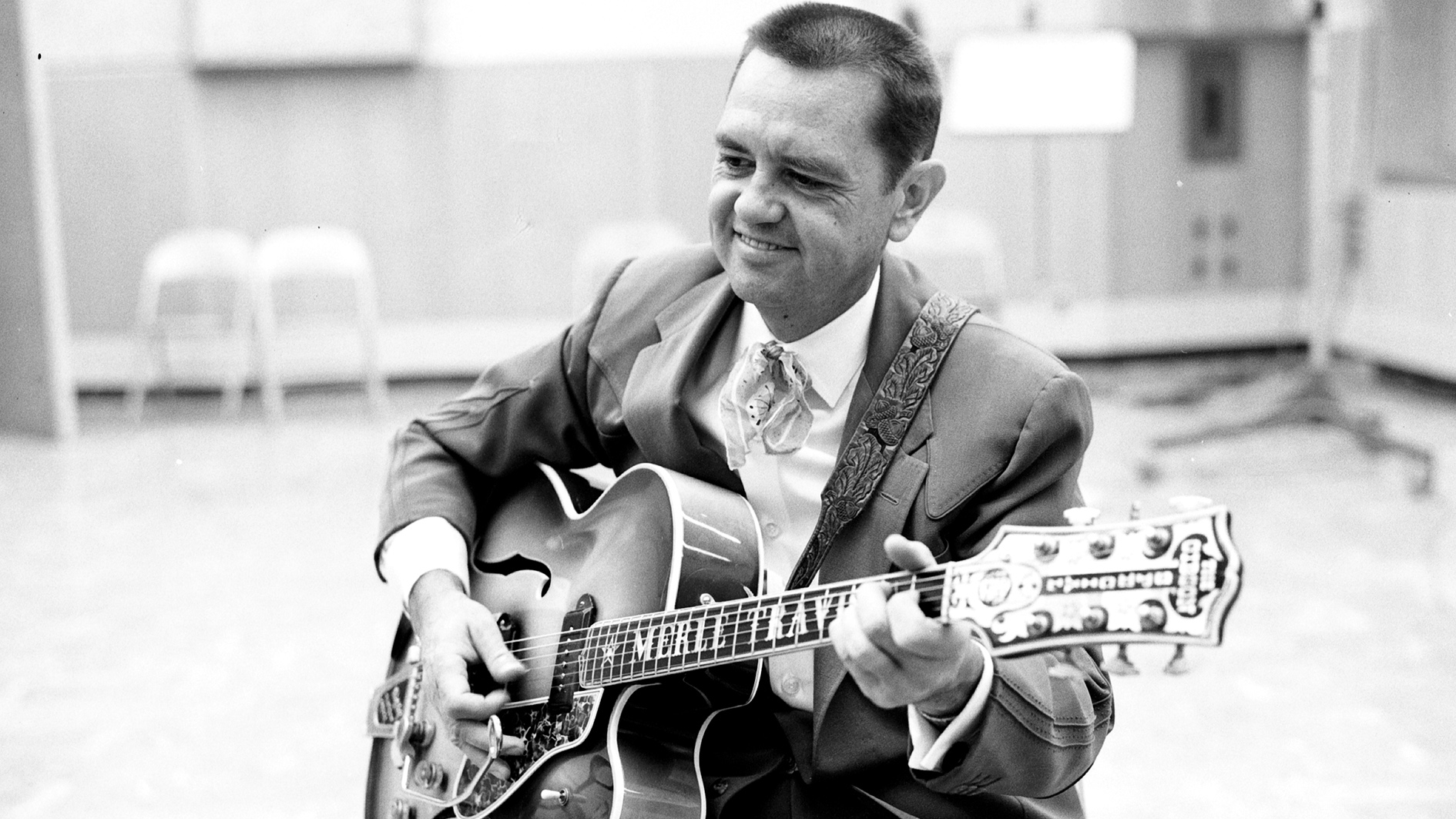
84. Use economy picking for speed
Economy picking (also known as rest-stroke picking) is great for crossing from one string to another, as it conveniently minimizes the amount of movement and effort required. To do it, you use the same stroke to pick consecutive notes on adjacent strings, like a mini-sweep.
First, try playing the example below using strict alternate (down-up-down-up) picking, then play it with the economy picking strokes indicated. Players like Frank Gamble have taken what is possible with this technique to build breathtaking levels of speed.
85. Practice with the click on beats two and four
Many jazz and blues players work on their timing and feel by practicing playing with a swing (triplet-based) feel with the metronome set on beats two and four, which is where a drummer usually hits his snare drum. Making the spaces between the clicks larger in this way forces you to use your internal clock and develops good time keeping.
86. Practice with a drummer
While practicing with a metronome is very helpful for improving general timing, playing with a live drummer is the ultimate experience for honing your feel and sense of groove and getting to know what interacting with other musicians is all about. Try to play with a drummer as often as you can. The next best thing would be to practice along with live drum loops.
87. Use chord inversions
This next example uses chord inversions - voicings with the third, fifth or seventh as the lowest note - to create a more interesting rhythm part. If you place the third of the chord in the bass, that it called “first inversion.” Putting the fifth on the bottom is called “second inversion,” and having the seventh as the lowest note yields “third inversion.” This example uses various C triad voicings in both first and second inversions. For an example of chord inversions as a compositional tool, listen to Eric Clapton’s Tears in Heaven.
88. Use rootless voicings
If you’re playing with a bass player, it’s not always necessary to play the root note in your chords. Many guitarists in jazz trios do this routinely. This approach frees you up to play chord substitutions, extensions and sparse voicings that sound less cluttered and let the other chord tones stand out more. This example uses various rootless voicings to create a colorful accompaniment that works in a Dm7 tonality.
89. Use open-voiced triads
Players like Eric Johnson use open-voiced triads to add space and color to their chord playing. An effective approach is to take the middle note of a triad and transpose it up or down an octave. For example, instead of playing the note stack C E G (low to high), play C G E or E C G.
Even though the voicings contain the same notes (albeit in different octaves), they sound remarkably different. This example features various chords from the harmonized C major scale and their inversions in what are called open voicings.
90. Play 16th-note funk with and without scratches
Practicing 16th-note funk rhythms is an effective way to strengthen your strumming technique while beefing up your timing. The key is to keep your strumming hand loose and moving back and forth across the strings - down, up, down, up, etc. - like a pendulum, even when you’re not hitting the strings.
These are the scratch strokes, which may be either strummed and muted with the fret hand (by simply relaxing your grip on the strings) to produce a hollow, unpitched “chuck” sound, or passed over entirely so that they’re silent. This approach and technique will ensure good timing and feel.
91. Create riffs using fourth intervals
The perfect-fourth interval (two notes that are five half steps apart) sounds good when played with distortion and is great for creating uncluttered-sounding rock riffs. This example uses fourths on the D and G strings to create a fingerstyle riff inspired by Dire Straits guitarist Mark Knopfler.
92. Use a capo
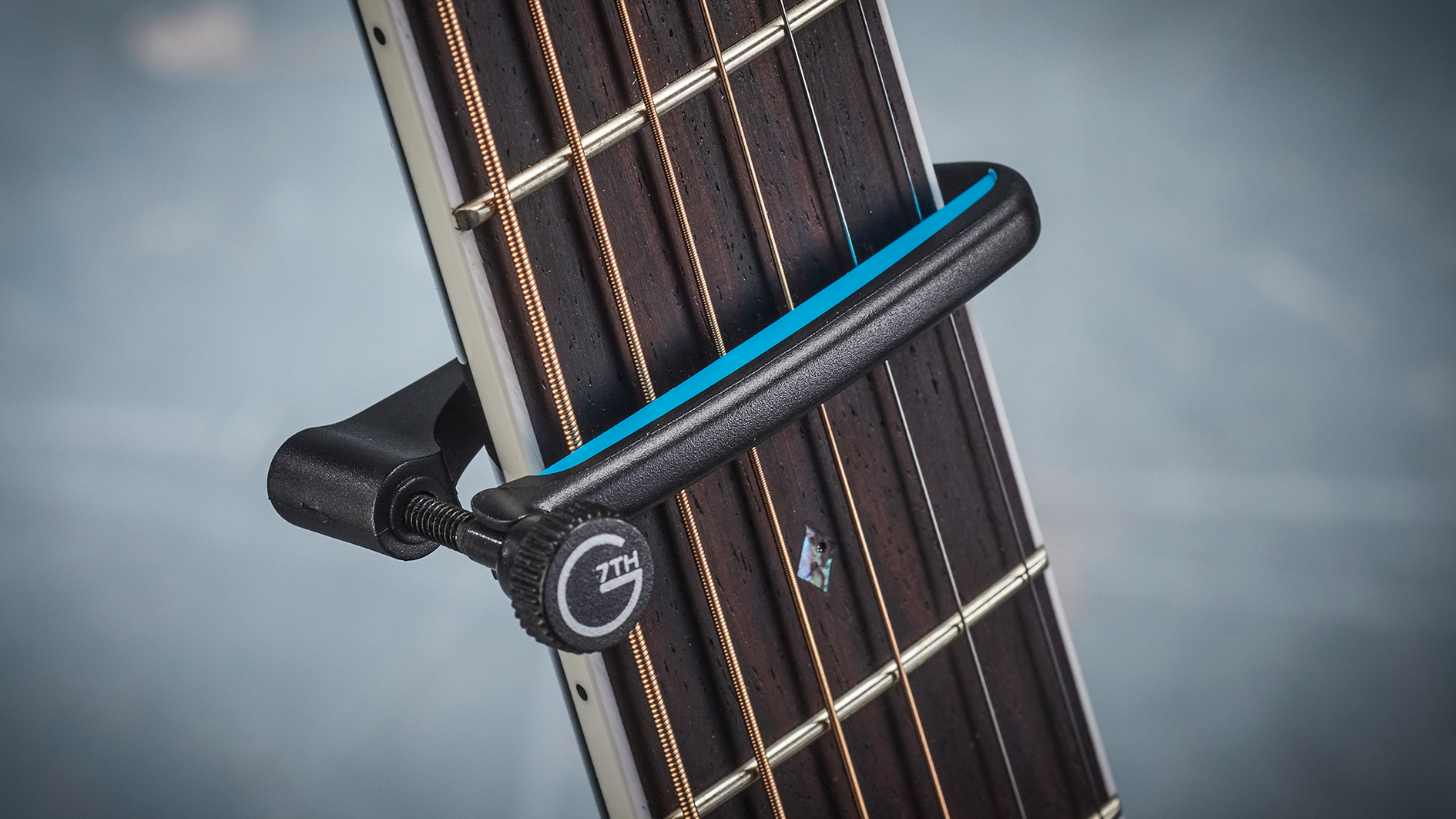
A capo lets you play in a variety of keys using the same finger-friendly open-chord shapes and fingerings. It is particularly effective on acoustic guitar and lowers the action considerably in higher positions, making the strings much easier to hold down.
The best capos have adjustable tension, allowing them to provide just the right amount of pressure in any position on the neck. Most guitar necks become thicker and wider as you move closer to the body, requiring less tension to hold the strings down firmly. No matter where it’s placed on the neck, the capo should provide enough tension so that the strings ring clearly, without going sharp in pitch.
93. Put a percussive “Slap” on beats two and four
Slapping the pick against the strings on beats two and four effectively fulfills the role of a snare drum and adds a percussive drive to a rhythm part. The key is to mute the strings with the fret hand while strumming an accented downstroke. Simply loosen your grip on the chord shape, then squeeze the strings again for the next strum.
This example is a funky, R&B-style accompaniment vamp that uses the percussive slap to drive the part forward. In a different genre, on Extreme’s More than Words guitarist Nuno Bettencourt uses fingerstyle slaps against the strings on beats two and four for a similarly driving, yet laid-back feel.
94. Use a compressor to sustain chords
A compression pedal is effective for evening dynamics and sustaining notes. A lot of country guitarists use a compressor when playing lead to control and limit the unusually loud peaks in their hybrid chicken-pickin’ licks and make their solos sound more even so that they sit in the mix better. Compression also slows the natural decay of a note or chord, so that it sustains with more volume. This example uses a compressor to sustain long chords.
95. Use chord tones over changes
Another effective soloing strategy is to embellish regular pentatonic or modal playing with chord tones
The best way to outline, or “acknowledge,” chord changes when soloing is to play the notes that make up the chord you are playing over, especially by landing on a chord tone right when there’s a chord change. Try learning a chord progression and then work on linking the arpeggios of those chords together.
Once you have mastered this approach you can choose to leave out notes and add chromatic linking tones. Another effective soloing strategy is to embellish regular pentatonic or modal playing with chord tones.
96. Use a slide with open tunings
Using a slide can sound great and make for some very expressive, emotional playing, provided you play the notes cleanly, in tune and with a pleasing, vocal-like vibrato, all of which take some practice to cultivate.
By retuning the guitar it is possible to access major, minor and modal tonalities with ease and without having to worry as much about suppressing the vibrations of strings you’re not picking at the moment, which is usually crucial in standard tuning. This example uses open E tuning to create a blues-rock-style lick.
97. Use the dorian mode over a minor seven chord
Widely used by improvisers, the Dorian mode, the second mode of the major scale, has a cool, blues-jazz flavor and is a great device for soloing over a minor seven chord.
One of the most attractive features of this scale is that it has no bad-sounding notes, so in the right harmonic context you can play it over a minor or minor seven chord and land on any of its seven notes and it will sound good. The Dorian mode is intervallically spelled: root, 2, f3, 4, 5, 6, f7.
98. Use open strings as pedal tones
Any open string can be used as a pedal tone - a droning or reiterated note against which others are played - for various legato and picking ideas. A good example of the use of a pedal is Led Zeppelin’s epic song Kashmir. Using an open string as pedal tone frees up your fret hand to play ear-grabbing wide intervals, and the results can be impressive sounding while being delightfully easy to play.
99. Incorporate chromatic notes into melodies and licks
Chromatic notes - notes half steps apart- can be used to add interest and melodic tension to your solos. The blues scale is a great route into this world, as it is a minor pentatonic with an additional f5.
The chromatic notes are most effective when used as passing tones to link scale and chord tones. It also helps to place the chromatic notes in parts of the bar where the beat is not stressed. This country-style example adds various chromatic notes to the E major pentatonic scale (E Fs Gs B Cs).
100. Damp unused strings
This final tip is an important yet often overlooked technique. Any strings that aren’t damped, or muted, by either the fretting or picking hand can ring out in sympathy with string(s) you’re playing on, creating unwelcome noise in your playing, which a distorted tone accentuates.
When practicing electric guitar, it is important to play through an amplifier often, which will make this noise painfully obvious to you and serve as a constant reminder to clean up your technique and continually mute those idle strings.
Guitarists that use two-handed tapping often deploy an elastic hair band around their guitar’s neck by the nut, which they can then slide over the nut to damp the strings and help suppress noise. This tapping example in the style of Jennifer Batten is easy to play cleanly with the aid of a similarly fashioned string mute.
